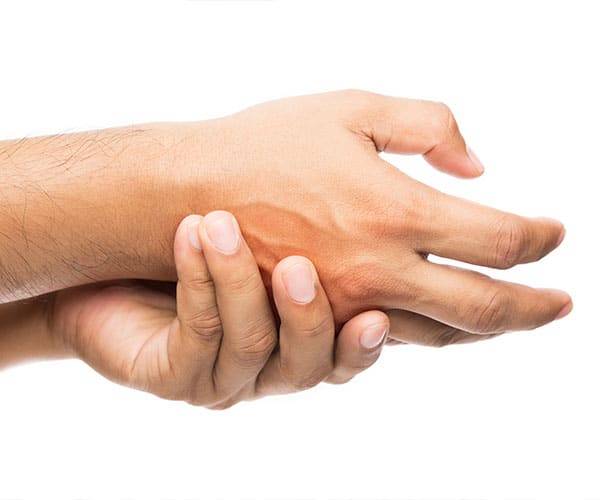
Relieving Hand Joint Pain 🖐️
Sept 2024- Relieve hand joint pain naturally with Stimcare Arthro Patches 🖐️ for fast, effective recovery.

MSDs, whose definition remains relatively vague, are a group of pathologies that lead to disability in both professional and private life.
They are caused by a progressive mismatch between the body's physical capacities and the body's ability to perform.hypersollicitation to which it is exposed.
Paradoxically, a sedentary lifestyle plays a role in the onset of MSDs.
These disorders are expressed by pain, stiffness, joint heaviness and loss of strength. They will have a long-term ****impact, and can lead to disability and a loss of mobility that lead to a deterioration in quality of life, repeated absences and de facto the risk of job loss.
The diversification of musculoskeletal disorders raises colossal issues in terms of public and occupational health. 22 million working days are lost due to MSDs and back pain. This represents 30% of sick leave.
MSDs are multifactorial and result from a chain of circumstances. However, they can be caused by a number of factors, professional activity plays an established role.
Musculoskeletal disorders account for more than 90 % of occupational illnesses reported under the Santé Publique France. They are the 1st cause of compensated occupational illnesses.
To date, the upper-body joints most affected are the hands, from wrist to fingers (38%), shoulders (30%) and elbow (22%).
In the lower limbs, which are less affected than the upper limbs, it is the lower back (7%) and knee (2%) that are predominantly affected.
Among the Most frequent MSDsHere is a non-exhaustive list:
Wherever they occur, MSDs can become irreversible and lead to lasting disability. To prevent these illnesses from becoming chronic, they need to be diagnosed and treated at an early stage.

The onset of these disorders is supported by lack of tissue hydration and drainage. The latter produce metabolic waste which accumulates in the body. This simultaneity of events sustains muscle, tendon, ligament and joint pain.
The factors contributing to musculoskeletal disorders are varied. A wonderful cocktail of biomechanical, environmental, psychosocial, organizational and individual constraints.
The design of the workplace and then the workstation play a fundamental role in the development of an MSD. A person who has always been able to carry out his activity for many years now finds himself deprived of his ability to do so. usual functional capacities due to a cause X which has occurred and then hindered the situation (pathology, personal event, aging, etc.).
What's more, although delicate and often overlooked, taking psychological factors into account is crucial.
Simply apply the patch by following our tutorial videos, available in French only. here to guide you every step of the way.
If you have any questions about how to apply the patch, send your request to sante@stimcareonline.com. A therapist trained and certified to apply STIMCARE patches will take the time to answer your questions.

Particularly work-related, MSDs result from biomechanical constraints such as awkward posture, twisting movements, frequent repetition of the same joint and/or muscle group, carrying heavy loads and static work.
Among them, environmental factors such as cold and noise can aggravate the onset of MSDs.
Not forgetting all the psychosocial constraints (job dissatisfaction of all kinds) and organizational (fast pace and long working hours).
When muscular effort is required, the associated fatigue increases. When fatigue exceeds recovery capacity, this cultivates a musculoskeletal imbalance. Over time, and if this situation persists, an MSD develops.
Stress, fatigue and insufficient recovery intensify the magnitude of these various stresses. Individual factors in MSDs include age, aging, diabetes, hypothyroidism, obesity, reduced immunity and inflammatory rheumatism. Excessive consumption of tobacco and alcohol is also a factor.
Pain can be the result of multiple pathologies, so it is important toidentify the physical, psychological and personal factors behind the onset of the disorder. This is a key factor in obtaining appropriate therapeutic proposals.

The human body is complex. Causes of MSDs depend on the nature of the work, work ergonomics, general state of health and medical history.
So limiting ourselves to a single cause of MSD will limit our ability to implement effective prevention. For all these reasons, it is important to include a medical follow-up to monitor the evolution of the disorder and implement an appropriate solution.
Musculoskeletal disorders are therefore the consequence of repetitive or inappropriate movements.
Since MSDs can affect different areas of the body, if you are experiencing pain when the area is palpated, stretched or contracted, we invite you to write to sante@stimcareonline.com for personalized advice from a therapist on the STIMCARE patches best suited to your needs.
Visit all our tutorial videos to help apply STIMCARE patches according to the painful area.

Sept 2024- Relieve hand joint pain naturally with Stimcare Arthro Patches 🖐️ for fast, effective recovery.

August2024- Discover Musculoskeletal Disorders (MSD), which affect muscles, joints and nerves, impacting quality of life. Find out more here.
Do you have any questions about using patches?
Stimcare - Tortel Industries, 2761 Les Rouvières, 26220 Dieulefit, France (excluding French overseas departments and territories)